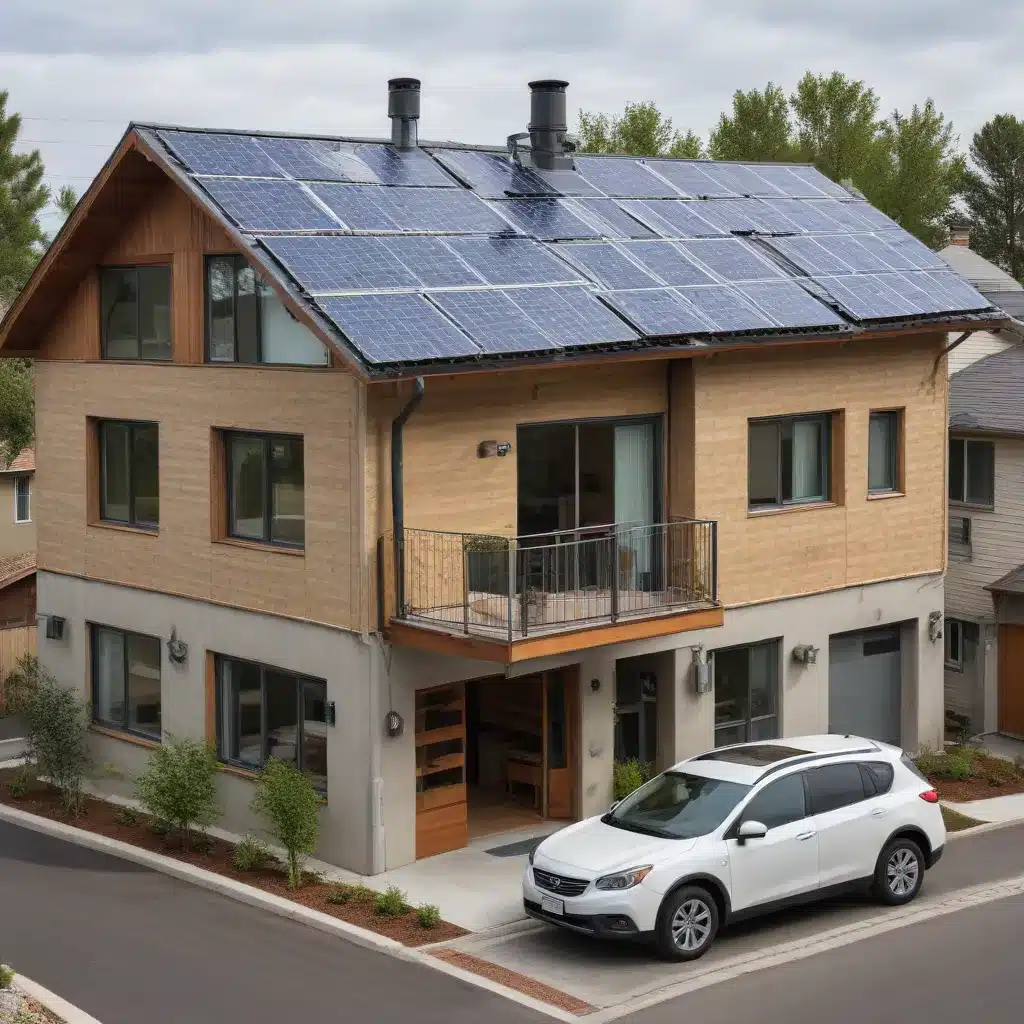
Sustainable Home Extensions: Optimizing Sustainable Building Vehicle-to-Grid Integration
As an experienced home extension consultant, I’m thrilled to share my insights on the exciting intersection of sustainable home design and emerging vehicle-to-grid (V2G) technologies. In this comprehensive article, we’ll explore how homeowners can leverage the latest advancements in sustainable building and energy integration to create truly eco-friendly, future-ready home extensions.
Sustainable Building Techniques
The foundation of any sustainable home extension lies in the use of energy-efficient design principles and renewable building materials. By thoughtfully incorporating passive solar strategies and prioritizing the use of low-carbon, recycled, or repurposed materials, you can significantly reduce the environmental impact of your home extension project.
Energy-Efficient Design: Optimizing the orientation, window placement, and insulation of your home extension can dramatically improve its thermal efficiency. Strategies like south-facing windows, high-performance insulation, and carefully considered shading can help regulate indoor temperatures, minimizing the need for energy-intensive heating and cooling systems.
Passive Solar Strategies: Harnessing the power of the sun can be a game-changer for your home extension. Techniques such as strategic window placement, thermal mass storage, and natural ventilation can reduce your reliance on fossil fuel-based energy sources, lowering your carbon footprint and energy bills.
Use of Renewable Materials: When it comes to the materials used in your home extension, look for options that are sustainably sourced, such as reclaimed wood, bamboo, or even innovative bio-based materials like hemp-based insulation. These renewable alternatives not only reduce the environmental impact of your project but also contribute to the creation of a circular economy.
Sustainable Energy Integration
Integrating sustainable energy solutions into your home extension is a crucial step towards achieving true energy independence and resilience. By incorporating renewable energy generation, battery storage systems, and seamless vehicle-to-grid (V2G) integration, you can create a self-sustaining, eco-friendly living space.
Renewable Energy Generation: Invest in solar photovoltaic (PV) panels, wind turbines, or even geothermal systems to generate clean, renewable energy for your home extension. These technologies can significantly reduce your reliance on the grid and provide a reliable source of power, even during grid outages.
Battery Storage Systems: Pair your renewable energy generation with advanced battery storage systems to store excess energy for later use. This allows you to maximize the utilization of your renewable resources and further reduce your dependence on traditional grid-supplied electricity.
Vehicle-to-Grid (V2G) Integration: The rise of electric vehicles (EVs) has opened up exciting new possibilities for sustainable home extensions. By integrating V2G technology, you can leverage the energy stored in your EV’s battery to power your home, or even feed excess energy back into the grid, creating a mutually beneficial relationship between your home and the wider energy network.
Optimizing Sustainable Building
To truly optimize the sustainability of your home extension, it’s essential to consider the overall performance of the building, the materials used, and the construction process.
Building Performance Optimization: Ensure that your home extension is designed and built with a focus on thermal efficiency, air tightness, and integrated building systems. This includes measures like advanced insulation, high-performance windows, and smart home technologies that seamlessly manage energy consumption and indoor climate.
Sustainable Materials and Construction: Embrace the principles of the circular economy by selecting low-carbon building materials, such as those made from recycled or renewable sources. Additionally, prioritize sustainable construction practices that minimize waste, optimize material usage, and promote on-site renewable energy generation.
Vehicle-to-Grid (V2G) Integration
The integration of vehicle-to-grid (V2G) technology is a game-changing aspect of sustainable home extensions, offering a range of benefits for both homeowners and the broader energy grid.
V2G Technology Overview: V2G systems enable bidirectional charging, allowing the energy stored in your electric vehicle’s battery to be fed back into your home or the grid when needed. This is facilitated by advanced grid integration protocols and smart charging algorithms that optimize the flow of energy based on your energy needs and grid demands.
V2G Benefits and Challenges: By leveraging V2G integration, homeowners can actively contribute to grid stabilization and flexibility, earning economic incentives for their participation. However, technological and infrastructure barriers, such as the availability of compatible EVs and charging stations, can present challenges that require careful planning and coordination with local authorities and utility providers.
Integrated Sustainability Approach
To truly achieve a sustainable home extension, it’s crucial to adopt a holistic, integrated approach that considers all aspects of energy generation, storage, and management, as well as the electrification of transportation.
Holistic Design Considerations: When planning your home extension, take a comprehensive view that encompasses renewable energy generation, energy storage and management systems, and the seamless integration of electric vehicles. By aligning these elements, you can create a truly self-sufficient, eco-friendly living space that maximizes the use of clean energy resources.
Sustainability Metrics and Evaluation: Assess the overall sustainability of your home extension project using established evaluation frameworks, such as life cycle assessment (LCA) and various certification and labeling programs. These tools can help you measure the environmental impact of your project and identify areas for further improvement.
Remember, sustainable home extensions are not just about the physical structure – they’re about creating a holistic, energy-efficient, and environmentally-conscious living space that sets the standard for the future. By embracing the latest advancements in sustainable building techniques and energy integration, you can make a meaningful contribution to a more sustainable future.
If you’re ready to embark on your sustainable home extension journey, visit our home extensions service page to learn more about how we can assist you in bringing your vision to life.
















